JAK/STAT Signaling
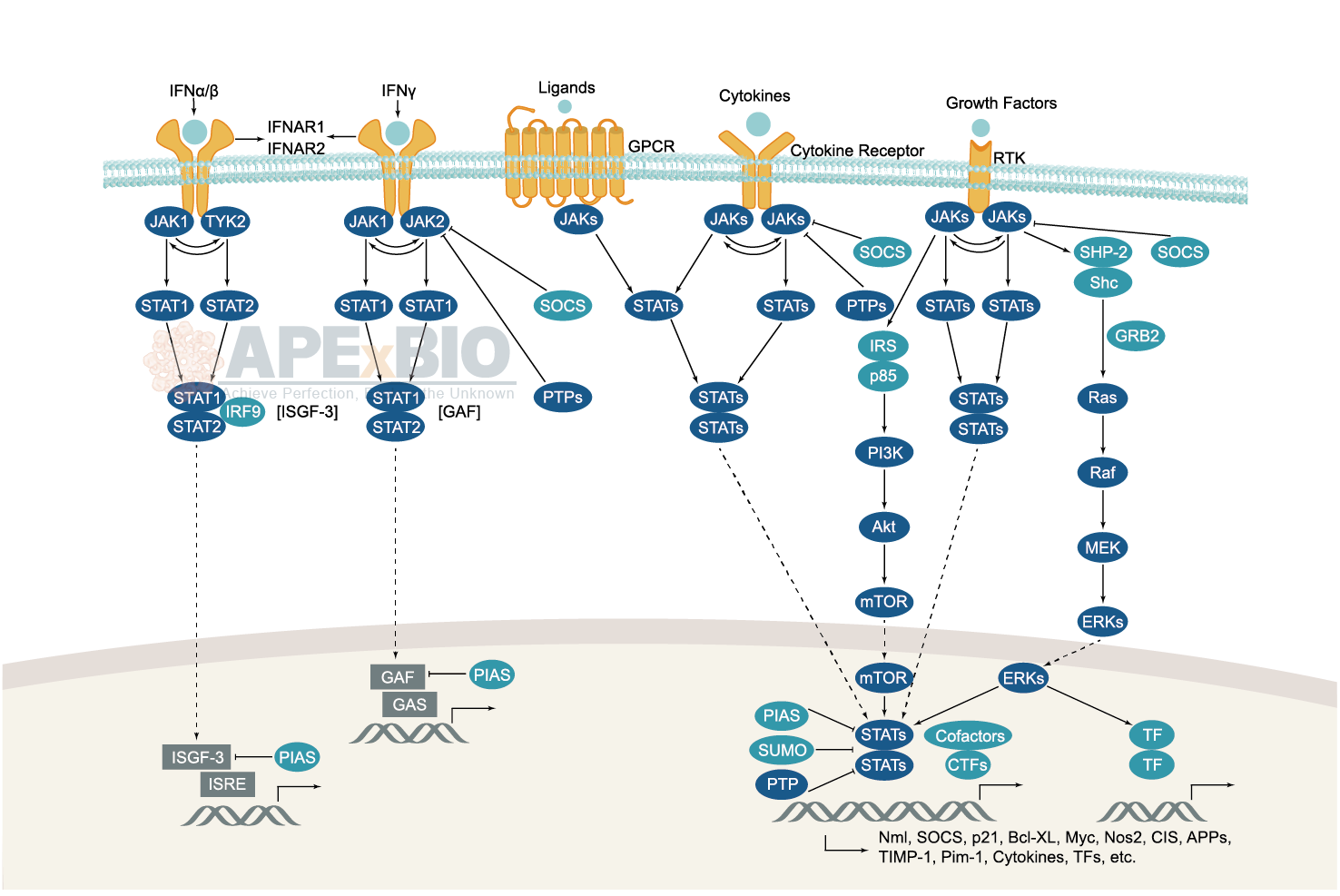

Various ligands including cytokines (e.g. interferons and interleukins), hormones (e.g. erythropoietin and growth hormone) and their cell surface receptors activate JAK proteins, which autophosphorylate, and then phosphorylate the receptor. Subsequently, JAKs phosphorylate a specific tyrosine residue on the STAT protein, promoting dimerization via SH2 domains. The activated STATs form homo-/heterodimers and translocate to the nucleus to trigger target gene transcription. In addition, suppressors of cytokine signaling (SOCS) family inhibit receptor signaling via homologous or heterologous feedback regulation. Dysregulation in JAK/STAT signaling is associated with diseases such as atherosclerosis, immunodeficiencies and cancer.
-
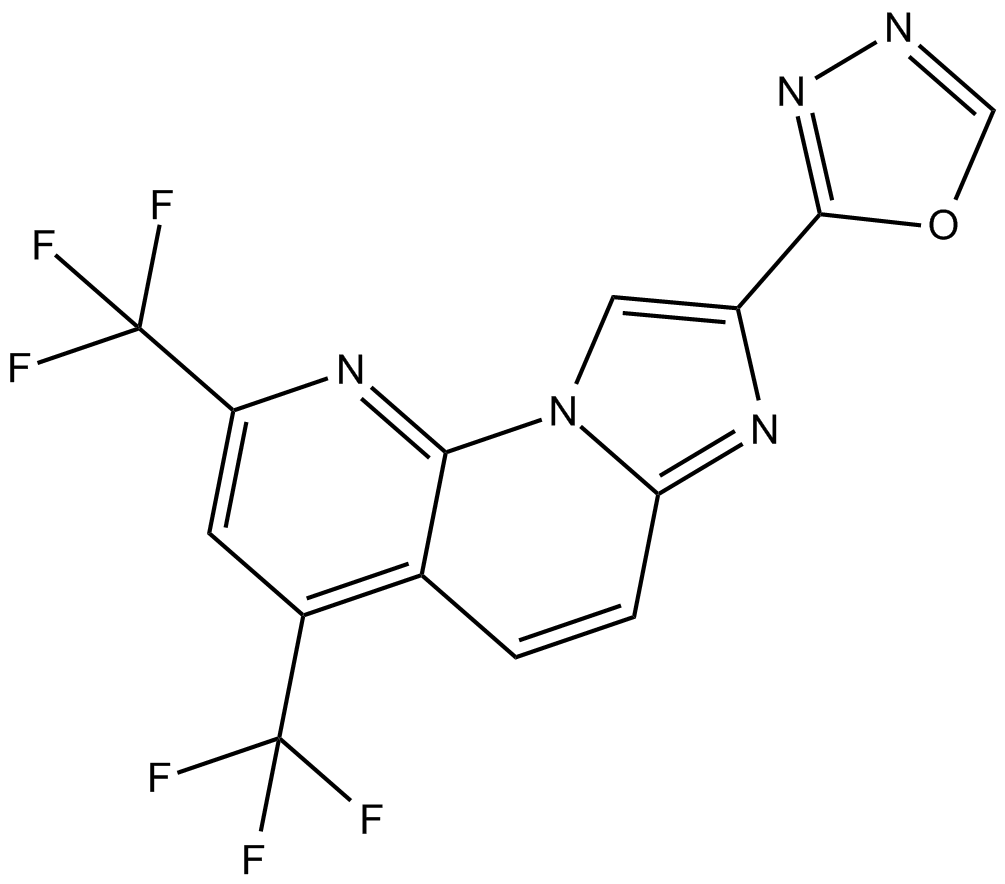 C4533 RO81911 CitationSummary: IFN-α receptor 2 agonist
C4533 RO81911 CitationSummary: IFN-α receptor 2 agonist -
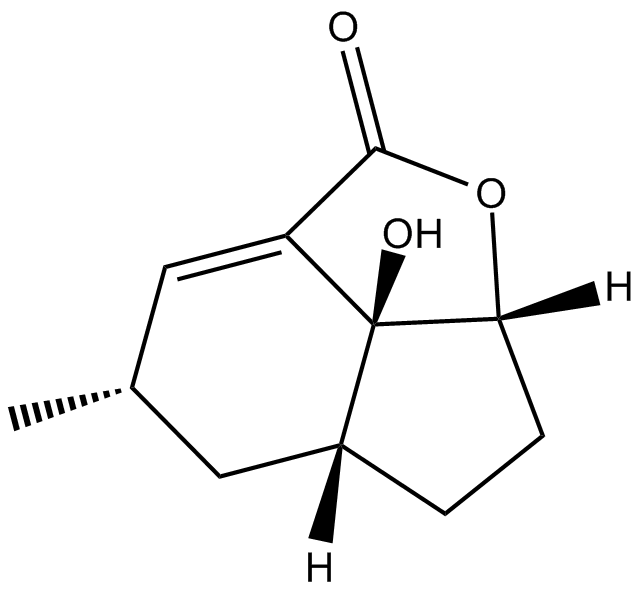 C4650 GaliellalactoneSummary: inhibits IL-6-mediated JAK/STAT signal transduction
C4650 GaliellalactoneSummary: inhibits IL-6-mediated JAK/STAT signal transduction -
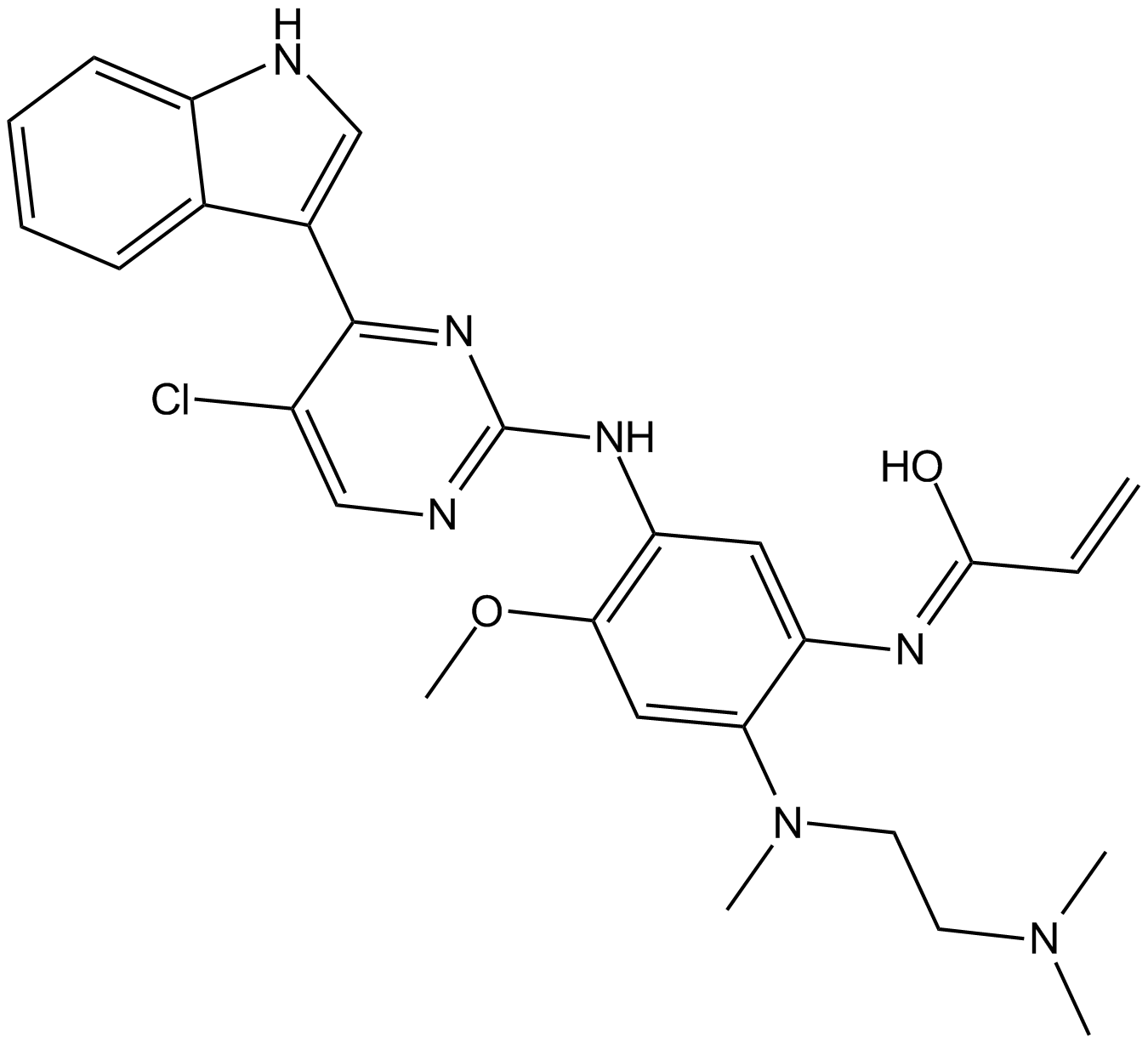 B1103 Mutant EGFR inhibitorSummary: Selective Mutated EGFR inhibitor
B1103 Mutant EGFR inhibitorSummary: Selective Mutated EGFR inhibitor -
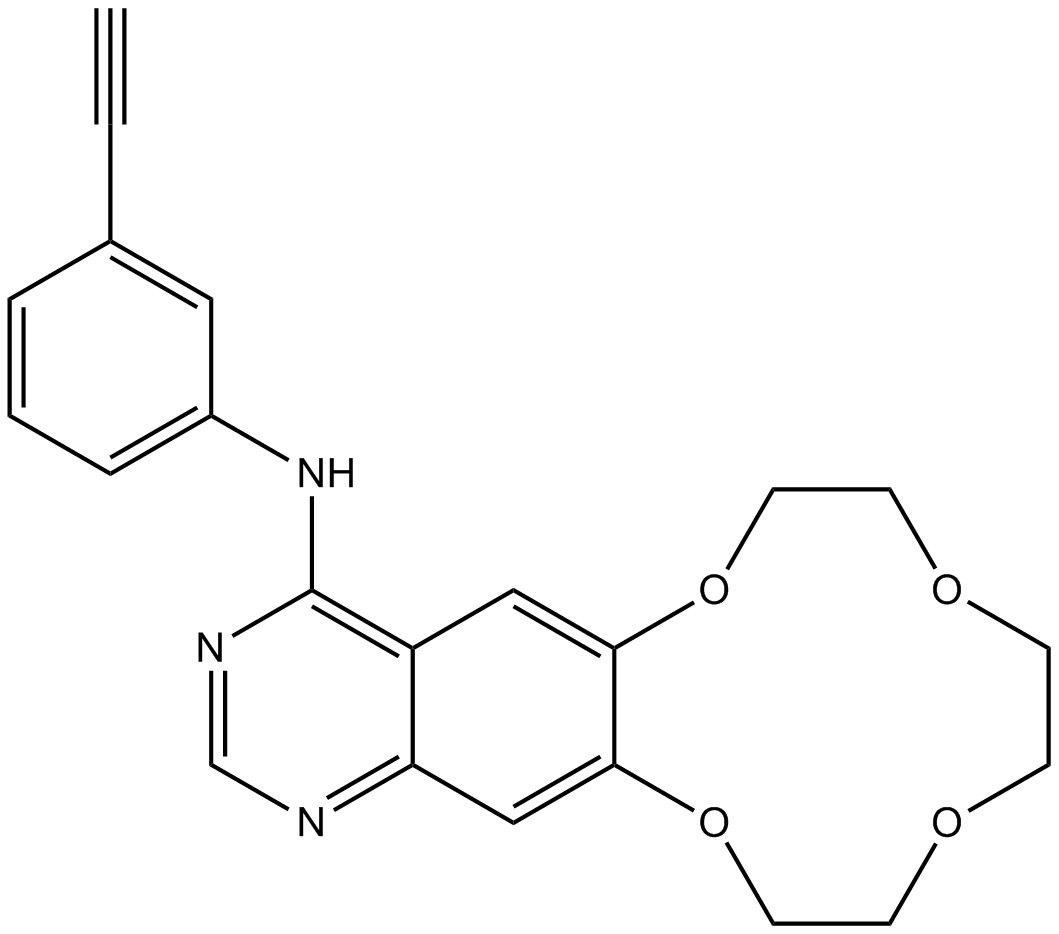 B1496 IcotinibSummary: EGFR tyrosine kinase inhibitor
B1496 IcotinibSummary: EGFR tyrosine kinase inhibitor -
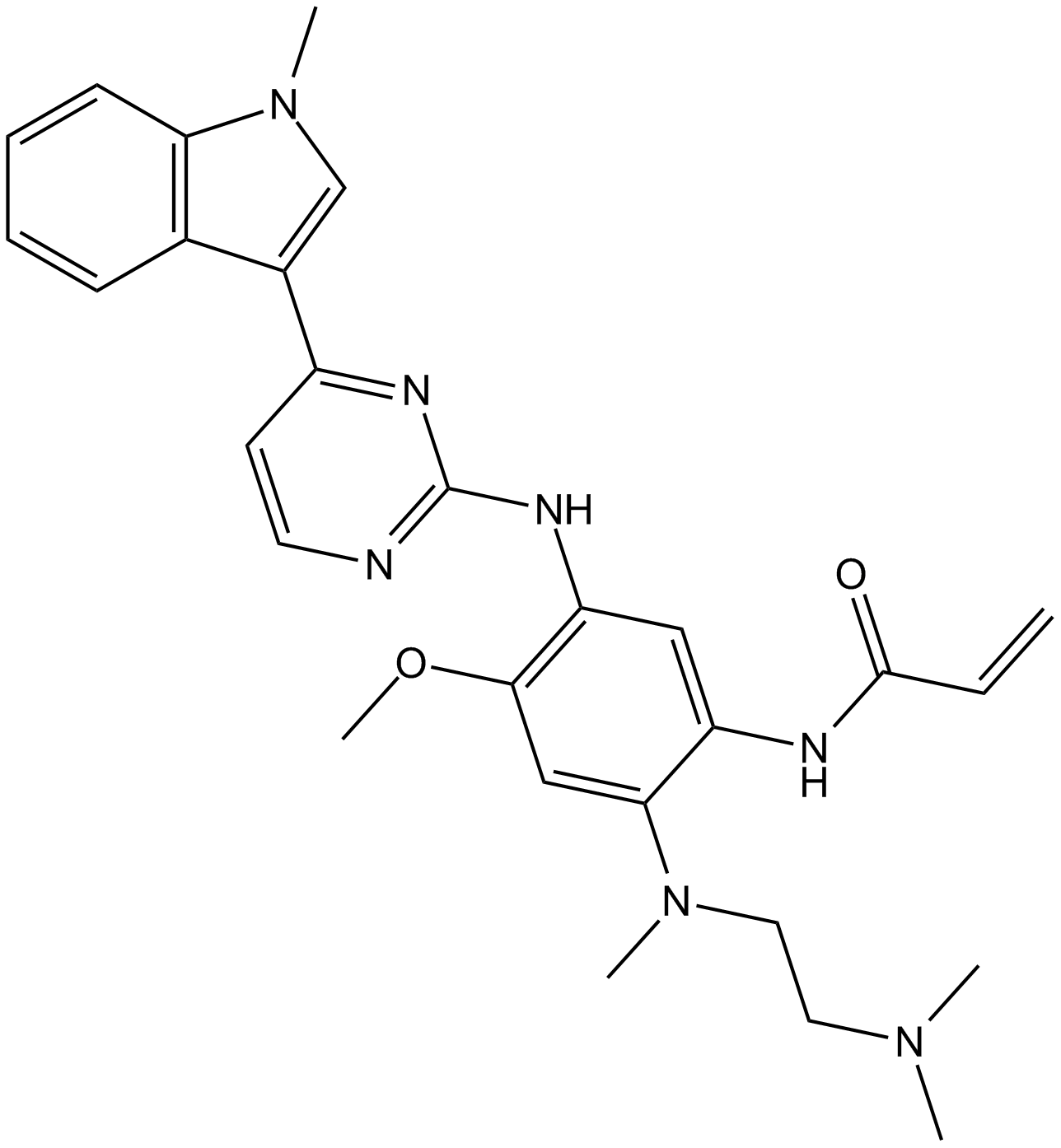 B1104 AZD-92911 CitationTarget: EGFRSummary: Mutated forms EGFR inhibitor
B1104 AZD-92911 CitationTarget: EGFRSummary: Mutated forms EGFR inhibitor -
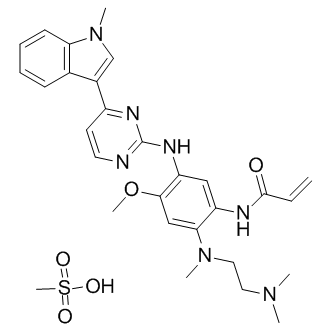 B1105 AZD-9291 mesylateSummary: third generation EGFRm inhibitor, oral and irreversible
B1105 AZD-9291 mesylateSummary: third generation EGFRm inhibitor, oral and irreversible -
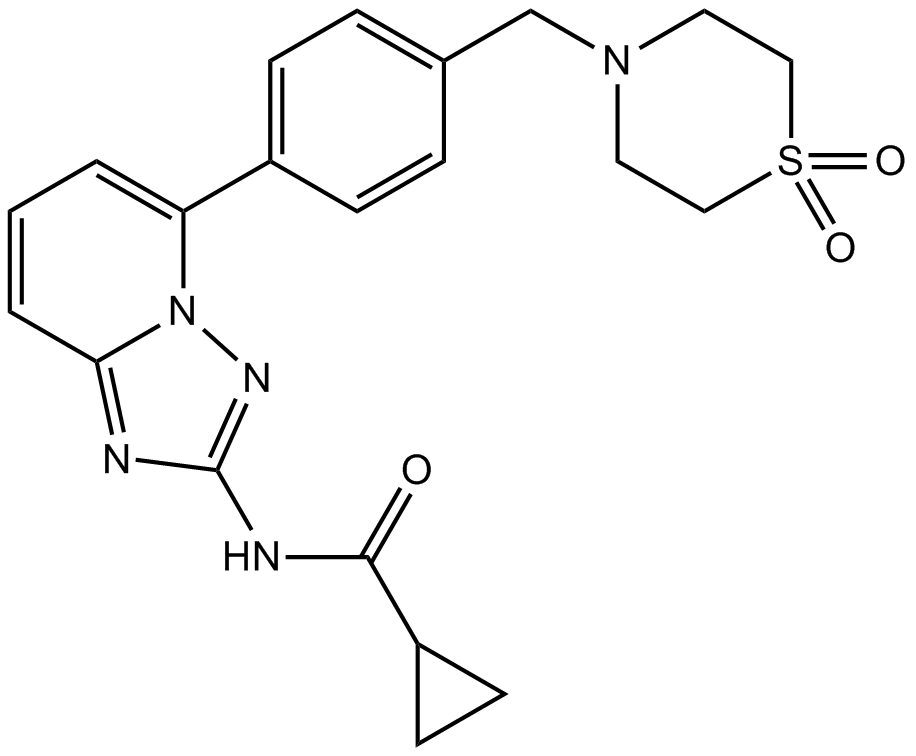 B1130 GLPG06341 CitationTarget: JAKSummary: JAK1 inhibitor
B1130 GLPG06341 CitationTarget: JAKSummary: JAK1 inhibitor -
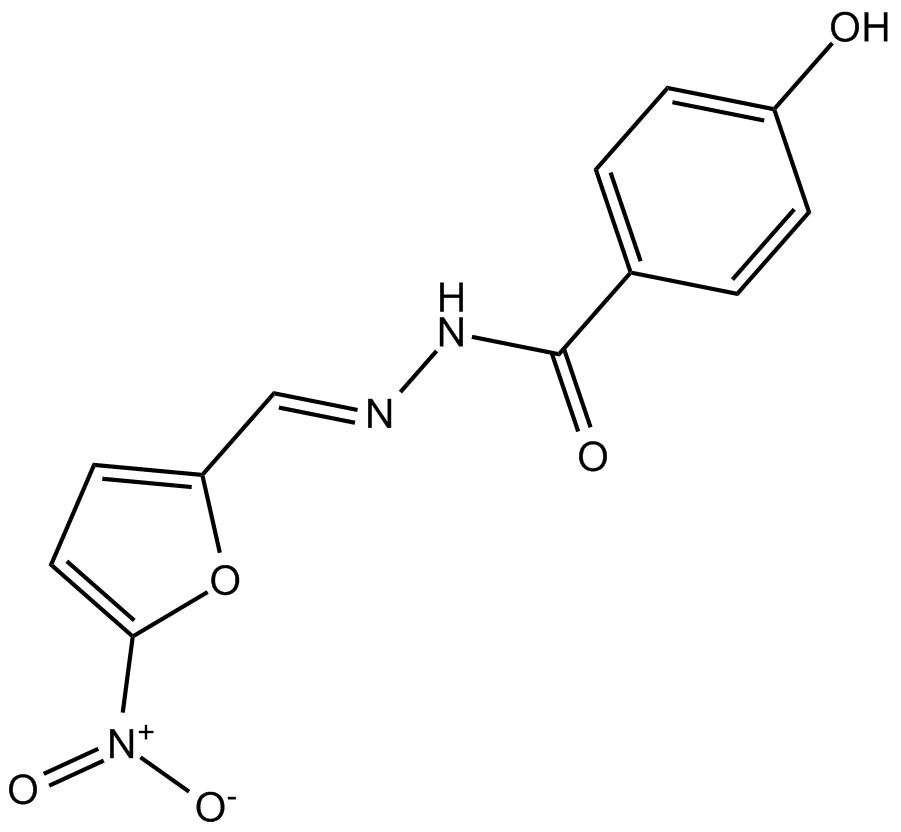 B1799 NifuroxazideTarget: STATSummary: STAT inhibitor
B1799 NifuroxazideTarget: STATSummary: STAT inhibitor -
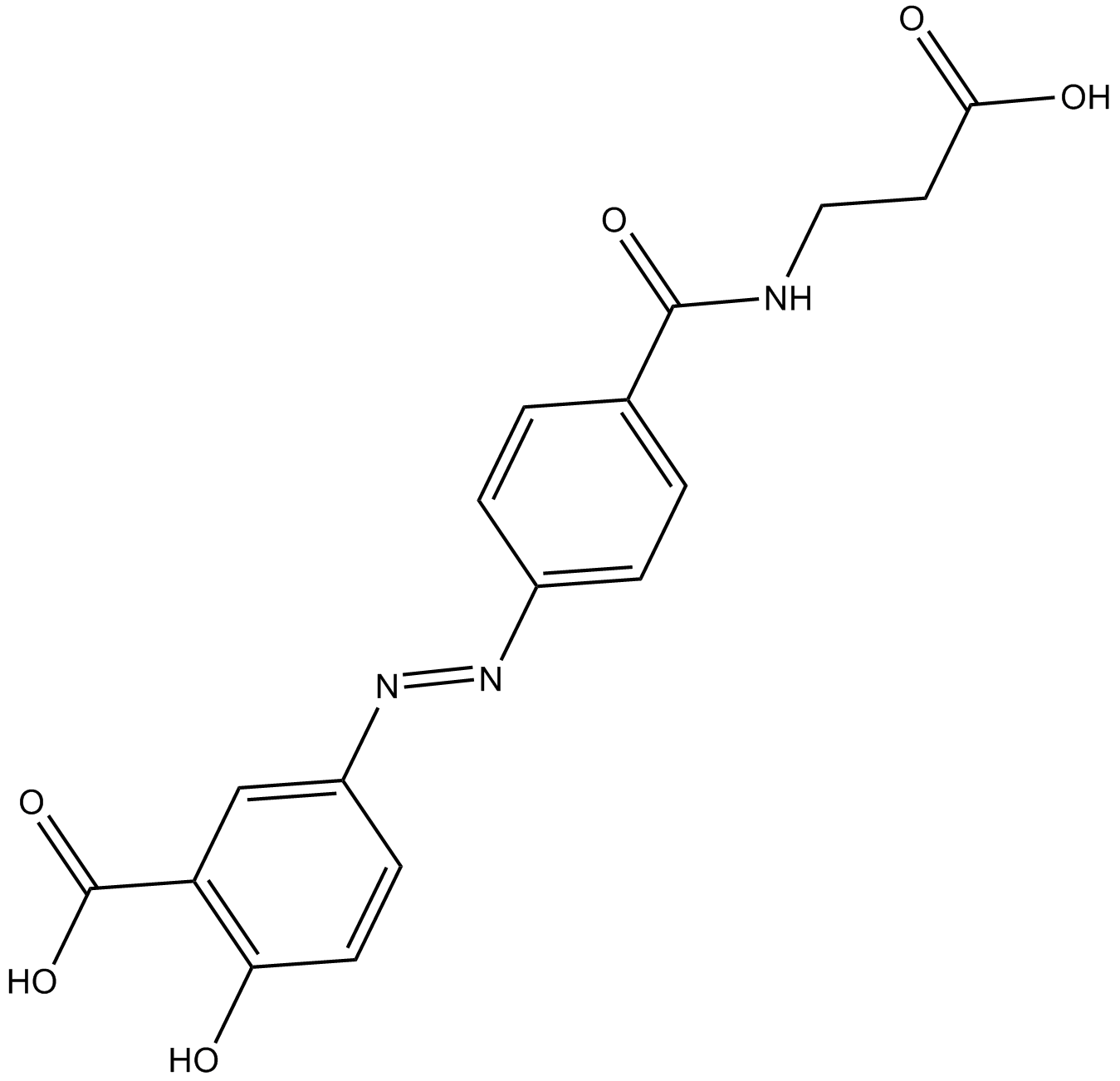 B3460 BalsalazideSummary: anti-inflammatory drug
B3460 BalsalazideSummary: anti-inflammatory drug -
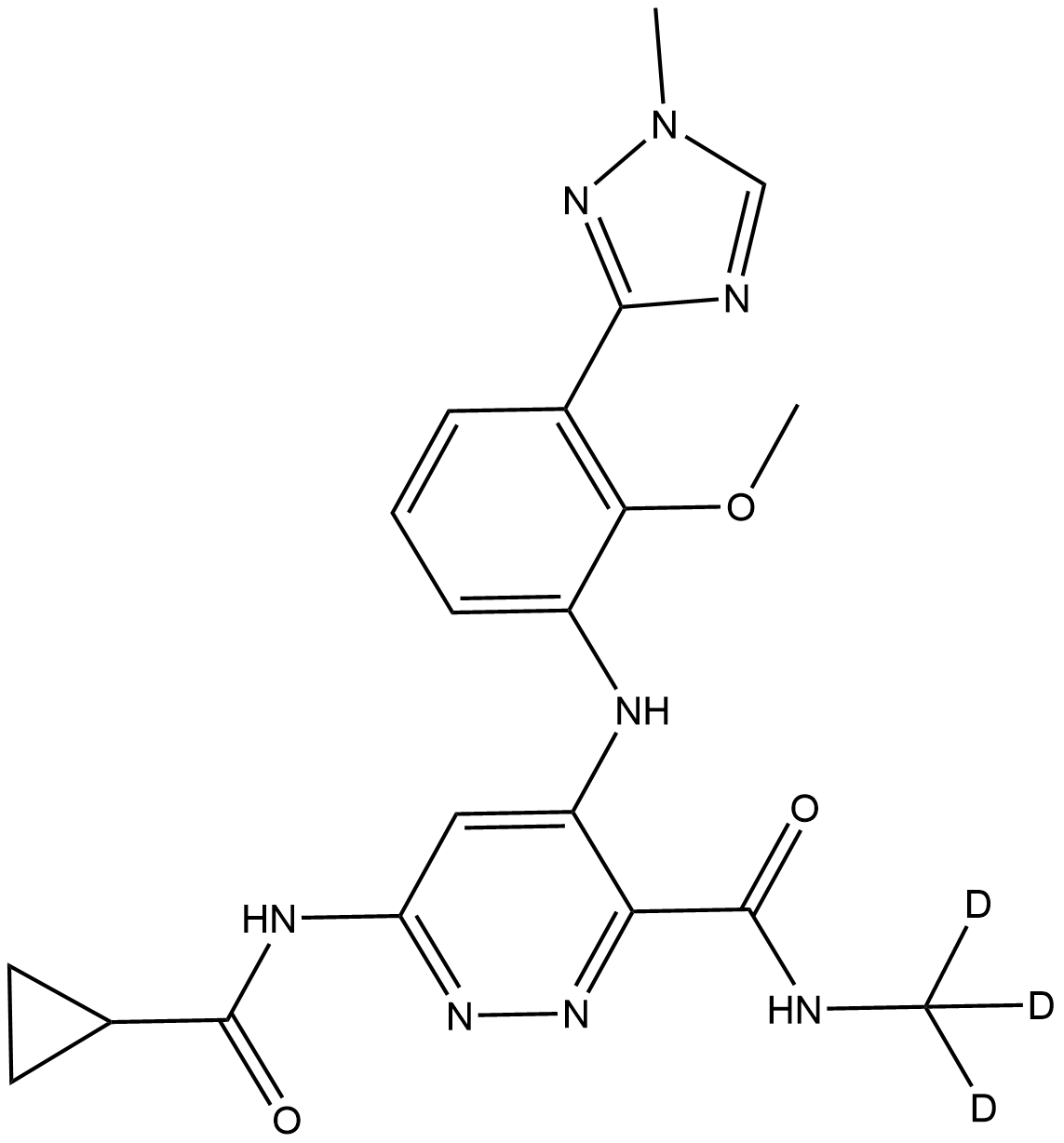 B8781 Deucravacitinib
B8781 Deucravacitinib


